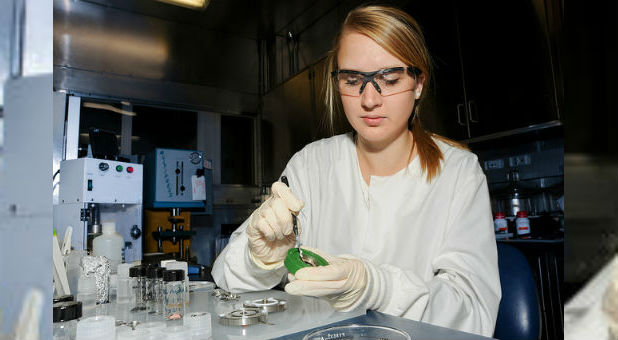Oral Roberts University‘s (ORU) College of Science and Engineering recently received the largest grant in institutional history. The college received a $1.148 million grant from the Robert Noyce Teacher Scholarship Program, which is a division of the National Science Foundation.
The grant will fund ORU’s new Math and Science Scholarships for Teaching (MASST) program, a collaborative endeavor to address the shortage of science, technology, engineering and mathematics (STEM) teachers within secondary, high-need schools. During the five-year grant, ORU’s MASST program will partner with Broken Arrow Public Schools, Tulsa Public Schools and the Tulsa Dream Center to provide specialized teaching internships to students. It is believed that this hands-on experience will benefit ORU graduates as they work with high-need students after graduation.
“ORU graduates are highly-qualified professionals whose intelligence and integrity make them an asset to any organization,” said ORU President William M. Wilson. “We are pleased to be a part of the solution for providing excellent STEM educators to children in the Tulsa area and throughout the United States.”
ORU’s MASST award is one of 40 new Robert Noyce Teacher Scholarship grants nationwide. The additional grants are being offered as a part of President Obama’s “Educate to Innovate” Campaign for Excellence in Science, Technology, Engineering and Math (STEM) Education. It is hoped that these efforts, paired with nationwide efforts and public-private investments, will move American students to the top of the pack in science and math achievement over the next decade.
“It is imperative that we equip our children with the tools they need for future success,” said ORU Provost Kathaleen Reid-Martinez. “We are thankful for the support of The National Science Foundation as we work to produce Spirit-empowered leaders who will provide superior STEM education in their classrooms.”
ORU’s MASST grant is a result of the evaluation of 118 proposals submitted through a competitive application and review process under The National Science Foundation.








































